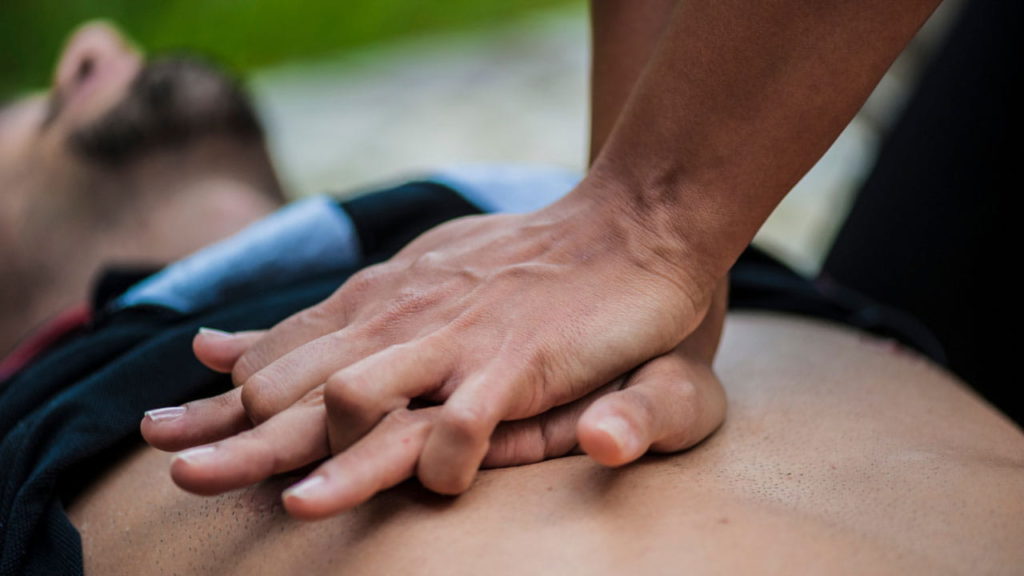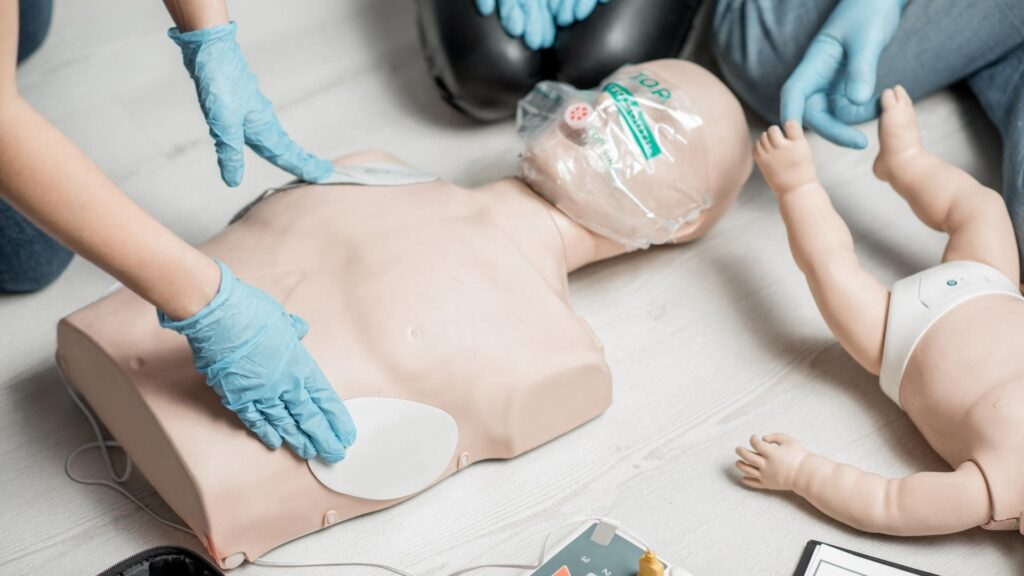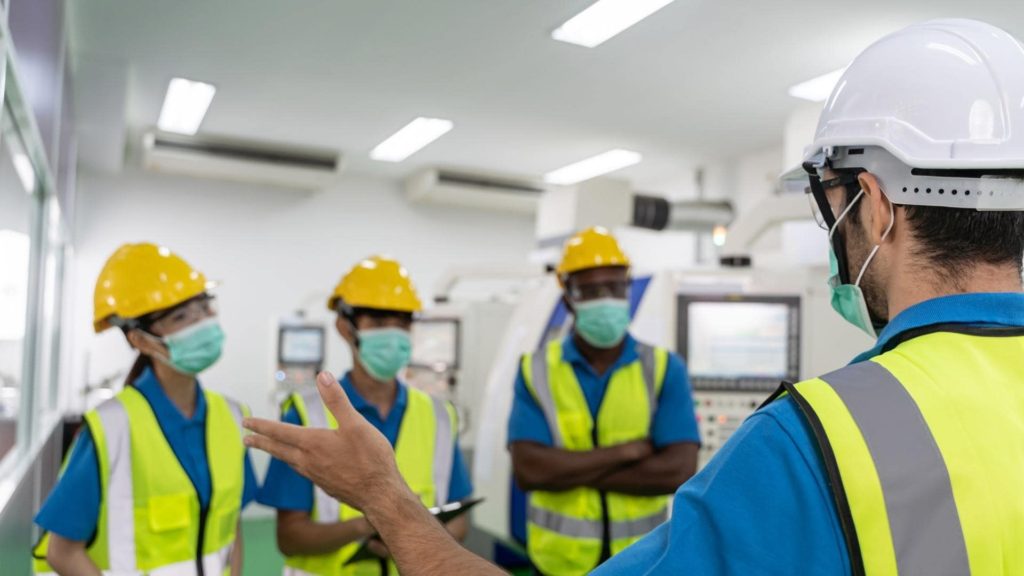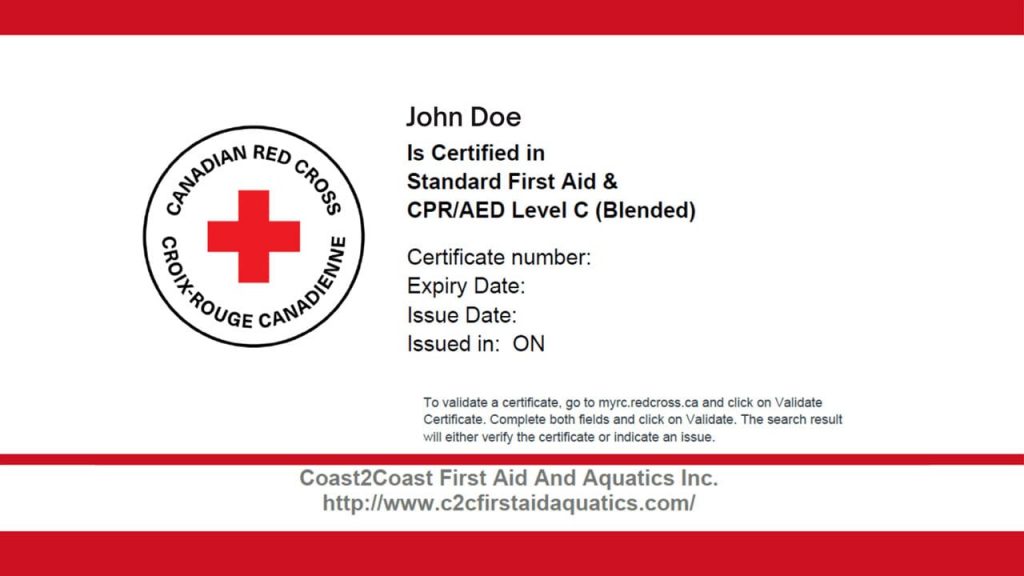Sports are exciting! The thrill of victory, the thrill of teammates – it’s all part of the magic. But along with the excitement comes the risk of injury. From minor scrapes to more severe emergencies, being prepared for First Aid in sports is crucial to keeping athletes safe and in the game.
Generally, there’s always a trained professional like a coach or a referee available on the sidelines who is trained in First Aid in sports. It’s advantageous for the athletes to be trained in First Aid themselves for their own well-being and the safety of others.
Why First Aid Knowledge Is Important for Athletes?
 Knowing basic first aid isn’t just for medical professionals. It’s a skill that every athlete, coach, parent, and spectator should have in their back pocket. In those critical moments after an injury, quick and appropriate action can mean the difference between a speedy recovery and a sidelined season.
Here are a few reasons why first aid in sports is a must for anyone involved on the field:
Knowing basic first aid isn’t just for medical professionals. It’s a skill that every athlete, coach, parent, and spectator should have in their back pocket. In those critical moments after an injury, quick and appropriate action can mean the difference between a speedy recovery and a sidelined season.
Here are a few reasons why first aid in sports is a must for anyone involved on the field:
- Immediate Response: First aid skills allow you to assess the situation and provide initial care, stabilizing the injured athlete until professional help arrives.
- Reduced Severity: Proper first aid can help minimize the severity of an injury, preventing it from worsening.
- Faster Recovery: Early intervention often leads to a faster and more complete recovery, getting athletes back on the field sooner.
- Peace of Mind: Knowing you have the skills to handle an emergency provides peace of mind for everyone involved.
Common Sports Injuries and Basic First Aid In Sports
There are two types of sports injuries: Chronic and Acute. Chronic injuries include muscle injuries or cramps while playing a sport. Acute injuries involve cuts, scrapes, minor wounds, sprains, fractures, concussions, etc. Let’s learn more about these common injuries for athletes and basic first aid in sports:1. Sprains and Strains
What happens:
A sprain is a stretched or torn ligament. Sprains and strains usually occur during twists, falls, or overexertions.Example:
A basketball player lands awkwardly after jumping for a rebound, resulting in a sprain in the ankle.First Aid:
RICE (rest, immobilize, cool, elevation) is the treatment of choice for most minor sprains and strains.
2. Cuts and Abrasions
What happens:
These include unfortunate wounds or scratches that might occur when dealing with the equipment or other players.Example:
A soccer player slides on the turf, resulting in a scraped knee.First Aid:
Clean the wound thoroughly and apply a bandage to prevent infection.3. Head Injuries
What happens:
Head injuries may range from mild concussions to severe head or brain injuries. It may occur due to direct blows to the head or fall.Example:
A football player takes a helmet-to-helmet hit, resulting in a concussion.First Aid:
Watch for signs of concussion and seek medical attention if needed.4. Heat Exhaustion

What happens:
This occurs mainly in the summer season when the sun is shining right above the head. Heat exhaustion occurs due to exertion or dehydration when the body overheats in the sun.Example:
A marathon runner collapses from heat exhaustion during a race.First Aid:
Move the athlete to a cool place, hydrate, and monitor their condition.5. Nosebleeds

What happens:
Nosebleed might occur from a direct blow to the nose or from high blood pressure or dry air.Example:
A boxer suffers from a nosebleed after a punch to the face.First Aid:
In case of nosebleeds, have the athlete sit with his head leaning forward. Pinch his nostrils together and have him breathe through the mouth for 10 minutes. If bleeding persists, seek medical help.6. Fractures
What happens:
A fracture is a break or crack in a bone. It can be caused by a direct blow, a fall, or overuse.Example:
A gymnast falls off the uneven bars, fracturing their wrist.First Aid:
Stop the bleeding (if there is any), immobilize the injured area, and apply ice-pack or cold compression to the area. The athlete should be kept comfortable and call for medical professionals.7. Dislodged Teeth
What happens:
A tooth can be knocked out due to a forceful impact to the mouth.Example:
A hockey player loses a tooth after being hit in the mouth with a puck.First Aid:
Keep the knocked-off tooth in milk, water or saliva and call for medical assistance immediately.Be a Game Changer!
Join our First Aid Training for Sports Injuries and learn how to respond effectively to common athletic injuries. Equip yourself with vital skills to support your teammates and ensure a safe sporting environment.
Preventing Injuries with First Aid in Sports
 Accidents on the field can’t always be controlled or stopped, but we can work to prevent them. Here are specific measures a coach, referee, and all athletes should take in order to avoid sports injuries:
Accidents on the field can’t always be controlled or stopped, but we can work to prevent them. Here are specific measures a coach, referee, and all athletes should take in order to avoid sports injuries:
- Athletes should always be mentally and physically fit before going to the field. Lack of physical strength or an existing injury could potentially worsen his/her condition while playing a sport.
- All athletes should stay hydrated at all times, especially during summer, to avoid heat stroke or dehydration.
- A well-equipped First Aid Kit and AED kit must always be available as a part of First Aid in sports in case of any unforeseen emergencies.
- All athletes should be provided with a safe environment, ensuring that all the equipment used during the sport is safe and sound. Athletes need to wear the right gear for the sport.
- Proper Warm-up and using the right techniques are also essential for all the players to avoid any mishaps.
Performing CPR During A Sports Injury
 In critical moments when an athlete’s life hangs in the balance, the ability to perform CPR can be life-changing. CPR, or Cardiopulmonary Resuscitation, is a technique that combines chest compressions and rescue breaths to manually circulate oxygenated blood throughout the body when the heart has stopped.
In critical moments when an athlete’s life hangs in the balance, the ability to perform CPR can be life-changing. CPR, or Cardiopulmonary Resuscitation, is a technique that combines chest compressions and rescue breaths to manually circulate oxygenated blood throughout the body when the heart has stopped.
What is CPR?
CPR involves two main components:- Chest compressions: Rhythmic pressure applied to the chest to manually pump the heart and circulate blood.
- Rescue breaths: Delivering air into the person’s lungs to provide oxygen.
When is CPR Needed?
CPR is performed when a person is experiencing cardiac arrest, meaning their heart has stopped beating. Signs of cardiac arrest include:- Unresponsiveness (not reacting to touch or sound)
- No breathing or only gasping
- No pulse
Why is CPR Knowledge Important for Sports?
In the sports world, sudden cardiac arrest can occur due to a variety of factors, including underlying heart conditions, trauma, or extreme exertion. The recent case of Buffalo Bills’ safety Damar Hamlin collapsing on the field due to card ko iac arrest during a 2023 game highlighted the life-saving potential of CPR. The immediate response of medical personnel, who administered CPR and used an AED, was instrumental in reviving him. Learning CPR is vital for athletes, coaches, and spectators because:- Every second counts: The sooner CPR is initiated, the greater the chances of survival.
- Bridge to advanced care: CPR buys time until medical professionals arrive and can provide advanced life support.
- Empowerment: Knowing CPR gives you the confidence to act in a crisis and potentially save a life.
Ready to Take the Next Step?
 Don’t wait for an emergency to happen. Invest in first aid training today and give yourself the power to make a difference. At Coast2Coast First Aid and Aquatics, we’re passionate about sports and athlete safety. We offer comprehensive first aid and CPR training tailored specifically for the sports community. Our courses cover everything from basic first aid skills to more advanced techniques, ensuring you’re prepared for any situation. We believe that everyone should have the knowledge and confidence to respond in an emergency. Our expert instructors will guide you through hands-on training, equipping you with the skills you need to protect yourself and those around you.
Contact Coast2Coast First Aid and Aquatics to learn more about our courses and how we can help you keep athletes safe.
Let us help you stay in the game!
Don’t wait for an emergency to happen. Invest in first aid training today and give yourself the power to make a difference. At Coast2Coast First Aid and Aquatics, we’re passionate about sports and athlete safety. We offer comprehensive first aid and CPR training tailored specifically for the sports community. Our courses cover everything from basic first aid skills to more advanced techniques, ensuring you’re prepared for any situation. We believe that everyone should have the knowledge and confidence to respond in an emergency. Our expert instructors will guide you through hands-on training, equipping you with the skills you need to protect yourself and those around you.
Contact Coast2Coast First Aid and Aquatics to learn more about our courses and how we can help you keep athletes safe.
Let us help you stay in the game! 


















